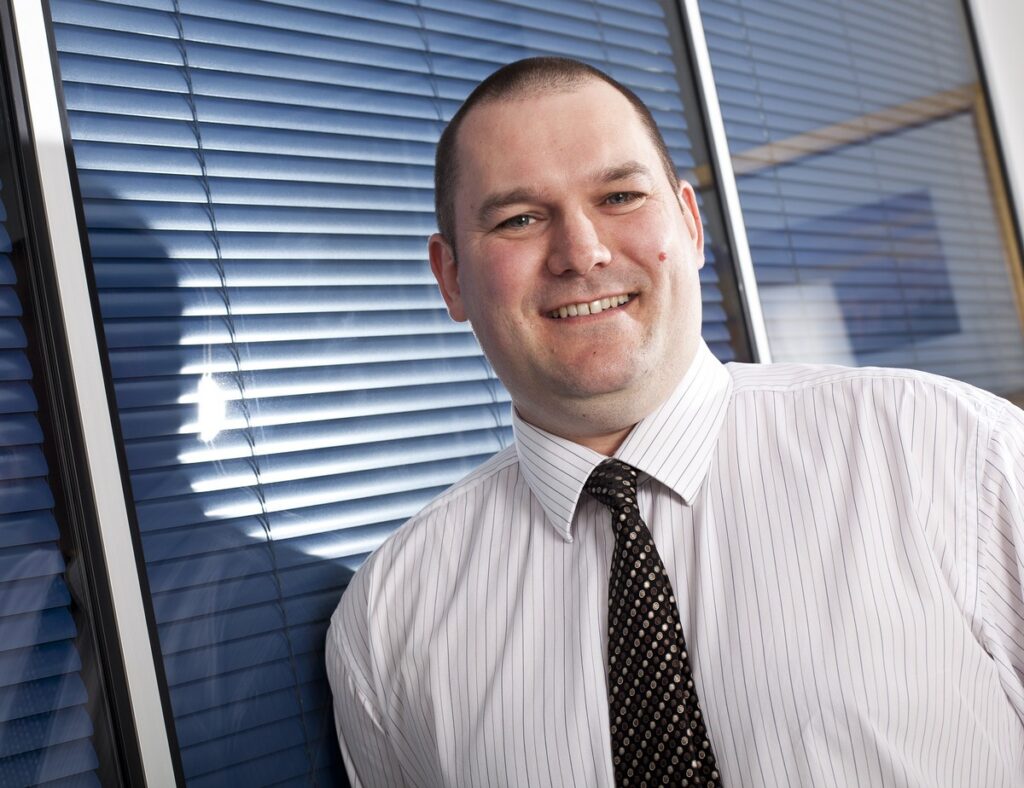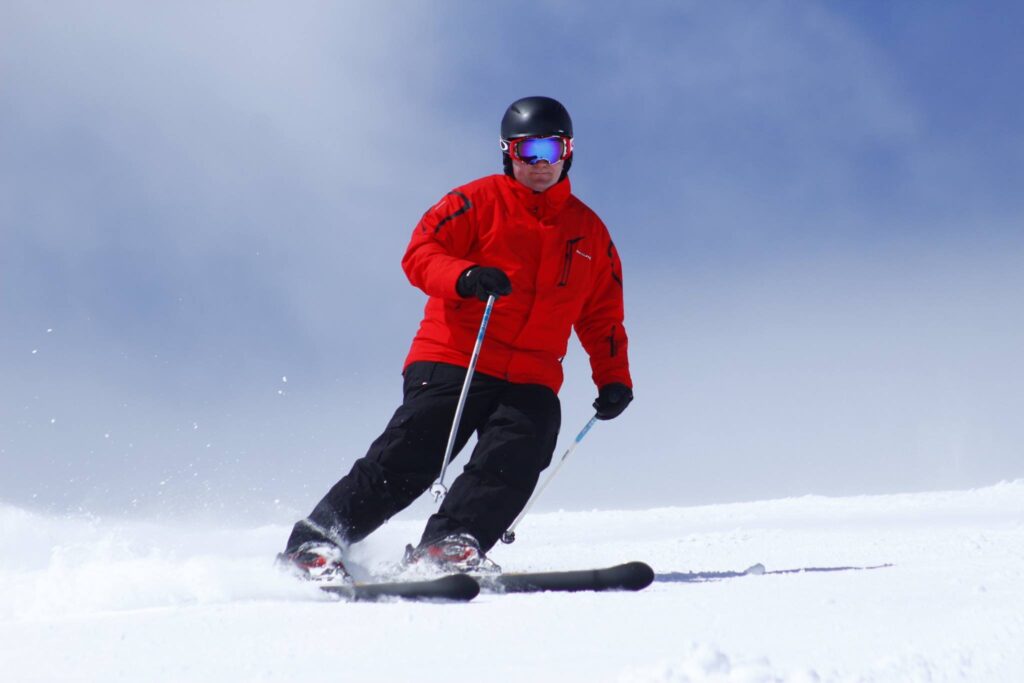 Last week, during No Falls Week (12-16 May 2025), we caught up with the Past Chair of SAEMA Mark Davison, Director of Premier Technical Services Group’s (PTSG’s) Access Maintenance Division, about his journey in the industry, the importance of proactive safety measures and how leadership plays a crucial role in preventing falls from height.
Last week, during No Falls Week (12-16 May 2025), we caught up with the Past Chair of SAEMA Mark Davison, Director of Premier Technical Services Group’s (PTSG’s) Access Maintenance Division, about his journey in the industry, the importance of proactive safety measures and how leadership plays a crucial role in preventing falls from height.
From Unexpected Engineer to Industry Safety Leader
Mark Davison didn’t start his career with a burning ambition to become a leader in height safety. Unlike childhood friends who dreamed of becoming firefighters with clear career paths, Davison’s route into the industry came through chance and opportunity rather than design.
“When I was at school, I was always jealous of people who wanted to be a fireman,” Davison reflects with characteristic frankness. “There’s a really defined career path there. You needed five GCSEs and be reasonably physically fit and then you could become a fireman. I had no idea what I wanted to do.'”
Instead, Davison followed the common advice to “do what you’re good at,” which led him through science A-levels and eventually into engineering. His entry into the world of height safety came through a chance connection in 1998, when the wife of someone who worked for a lifting company connected him with an opportunity.
From there, his career evolved organically, moving into suspended access work before joining PTSG in February 2009, just two years after the company was founded. Having witnessed the company’s growth from its origins in access and safety to its expansion through numerous acquisitions, Davison has become an important part of PTSG’s technical expertise and safety leadership.
The Power of “Yes” and Setting Industry Standards
What stands out about Davison is his remarkable commitment to shaping industry standards. Through his disarmingly simple policy of “never saying no to anything,” he has become deeply involved in setting safety benchmarks across the UK and Europe.
Davison currently serves as the Past Chair of SAEMA, Chair of the British Standard Committee for suspended access equipment and Convener of the European standard committee. This extensive involvement allows Davison to be involved in influencing safety standards from the ground up.
His European committee work has added a fascinating dimension to his role, bringing him into contact with manufacturers and experts from across the continent. “Sometimes you can have eight or ten nationalities around the table. It’s really interesting, enlightening and good fun,” he notes. “Their English is far better than my French or Spanish.”
This international cooperation has been particularly impactful in improving the design of height safety equipment. “We’re encouraging designers to make machines that you don’t need to climb a ladder to maintain,” he explains. “If we can do maintenance just by walking up to equipment rather than by getting a ladder out, that’s brilliant.”
The Stark Reality: Falls from Height in 2025
According to the latest figures from the Health and Safety Executive, 50 people lost their lives due to falls from height in 2023/24, accounting for 36% of all workplace deaths in Great Britain – a significant increase from 25% in 2021/22 and 30% in 2022/23.
For Davison and his colleagues at PTSG, these aren’t just statistics. The 2024 figures from the No Falls Foundation tell a sobering story: 50 people died from falls in 2023-24 – that’s one colleague, friend or family member every single week who never made it home.
This harsh reality drove PTSG’s intensive approach to No Falls Week, which coincided with Mental Health Awareness Week. “Clear minds make safer decisions, especially when you’re 50 feet off the ground,” notes Davison, highlighting the company’s holistic approach to safety.
The Duty Holder Dilemma: Shared Responsibility
One of the most important messages Davison emphasises is that height safety isn’t solely the responsibility of maintenance engineers or window cleaners, the workers, it requires coordination between all stakeholders, particularly building managers and duty holders.
“Our engineers might visit five to ten buildings a week – we can’t know everything going on at each site,” Davison explains with passion. “But the building manager knows what’s happening in his/her building. He/she knows what’s happening on the ground floor where the cafes and restaurants are. He/she knows what’s going on engineering-wise with the backup power system. He/she knows what’s going on at the football ground down the road when they’ve got a match on Wednesday and the pavement is crammed with fans.”
This knowledge gap between site-specific awareness and visiting contractors creates a critical safety challenge. “As contractors, as people who go to that building, we turn up not knowing anything that’s going on. It’s an important collaborative relationship that enables people on site to take more control of that.”
He cites examples in London where suspended platforms might land outside tube station entrances, requiring coordination with Transport for London and station management. “The maintenance engineers and window cleaners can’t control any of that. That has to be the onsite team. However, getting them to realise that is the trick.”

Davison is no stranger to danger – whether on the slopes or on site, he knows that managing risk is all about preparation, awareness and the right protective gear. Safety first – on the job and off!
“If They’re Not Happy, They Just Say No”: Leadership in Safety Culture
Perhaps most telling about Davison’s leadership style is his unequivocal support for his team when they decide conditions aren’t safe to proceed with work.
“The important thing for me, and everyone who works at PTSG is that if they’re not happy, they just say no, and they’ll always have our support with that,” he states firmly.
This clarity creates confidence throughout the team, with most engineers knowing they don’t even need to call for permission to prioritise safety. “Most of the people don’t need to ring me because they know what my response is going to be,” Davison explains. “I trust what they’re doing and their analysis of a situation.”
This approach extends to various scenarios, from shopping centres requiring out-of-hours work to managing difficult weather conditions. “There are limited wind speeds you can use cradles in,” he notes. “If the team are carrying out a load test or an insurance inspection and the wind starts getting up, there’s just no doubt at all. If you’re not happy, just don’t do it. It’s quite simple.”
Importantly, Davison recognises that prioritising safety isn’t about assigning blame or adding costs. You’ve just got to accept that sometimes it’s part of working outdoors. You’re not working in a nice, controlled environment all the time.”
“As the figures prove, the moment we get complacent is the moment risk creeps in,” he reflects. “We talk about first line and last line of defence with PPE and safety checked equipment. The first line is to make sure you’re happy that what you are doing is necessary and safe – that’s absolutely fundamental.”
This commitment to creating a culture where safety is prioritised above all else is perhaps the most powerful message from Davison’s decades of experience in the industry. It’s a reminder that while standards, equipment and training are crucial, it’s ultimately the confidence to say “no” when something doesn’t feel right that prevents accidents.
Key Takeaways:
- Leadership matters
Create a culture where team members feel confident saying “no” to unsafe conditions without fear of repercussions. - Shared responsibility
Height safety isn’t just the contractor’s concern duty holders must take ownership of site-specific risks and planning. - Design for safety
The most effective fall prevention happens at the design stage specify equipment that minimises the need to work at height. - Standardisation drives improvement
Active involvement in standards development helps shape industry best practices. - Mental health affects physical safety
Clear minds make better decisions at height recognise the connection between psychological and physical wellbeing. - Proactive planning saves lives
Consider what could go wrong before work starts, especially in complex environments like busy urban areas. - No blame, just solutions
When safety concerns arise, focus on addressing them collaboratively rather than assigning fault.

